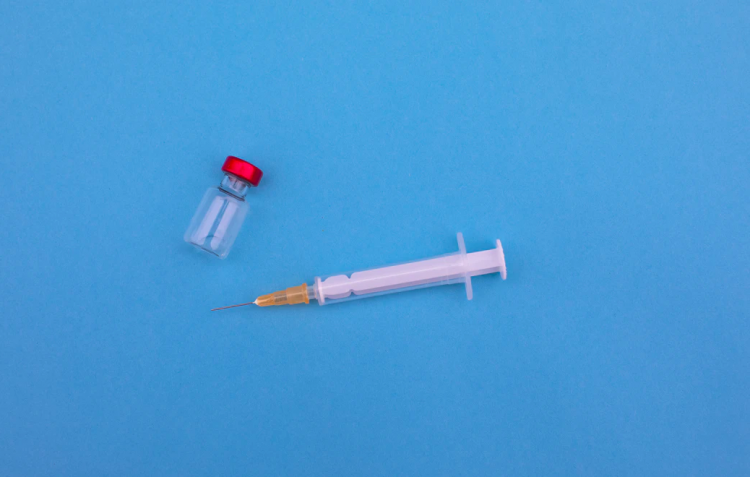COVID-19 Vaccines in Latin America

In the first weeks of December 2020, the U.S. experienced an average of 200,000 positive COVID-19 cases per day. With over 550,000 deaths, it was only a matter of time until the very anticipated vaccines came to market. In mid-December 2020, the U.S. began vaccinating Americans at an exponential speed. Today, the U.S. is vaccinating around 2.7 million people per day, with this number increasing every day. At this rate, 75% of the population will be fully vaccinated by July of 2021, reaching herd immunity.
A country like the U.S. can carry out a massive vaccination campaign fairly easily. The U.S. Federal Government spent roughly $12.4 billion in funding research and securing a million doses of vaccines for all U.S. citizens residents. Putting those $12.4 billion in perspective with other U.S. government expenditures, this amount seems relatively small. "It's a fraction of what the government spends on income insurance (Social Security cost $1.1 trillion in 2019), health care programs (Medicare cost $750 billion in 2018), or wars (the U.S. involvement in Iraq cost $144 billion in 2018)."
Image credit: Unsplash/@little_plant
This narrative is entirely different in Latin America. Countries in the region are beginning the vaccine race in many ways, some more efficient than others. Most Latin American countries have fallen behind on vaccines, as most third-world countries tend to do. The COVID-19 Vaccine Global Access (COVAX) initiative may be the best bet on worldwide immunization against the coronavirus. Co-managed by three partner agencies, including the WHO, Gavi, and CEPI, it is the only global initiative working with governments and manufacturers to ensure COVID-19 vaccines are available to high-income and lower-income countries.
The most successful vaccination campaign in the region thus far has been Chile. Starting in early February, Chile has administered almost 10 million vaccine doses, meaning nearly half of the population has received at least one dose. With its population of 19 million, "Chile has a set goal of delivering at least one dose to 15 million people by the end of June," says Vox. The country decided not to align itself geopolitically. This decision allowed them to buy a large number of vaccines, regardless of where they came from. After setting up vaccination sites at universities, soccer stadiums, and even creating drive-through centers, Chile began its mass vaccination campaign. "The idea was to get a big portfolio of vaccines, all of which relied on slightly different technologies, and to get them from as many different makers as possible," Vox continues. Chile also hosted phase three clinical trials for several COVID-19 vaccine candidates. These included Sinovac, Johnson & Johnson, AstraZeneca, and CanSino Biologics Inc.
As of March 1st, Chile has an agreement for 14 million doses with Sinovac Biotech, the vaccine developed by the Chinese biopharmaceutical company, 10 million doses from Pfizer/BioNTech, 4 million from AstraZeneca, and up to 4 million doses from Johnson & Johnson.
Image credit: Unsplash/Hakan NuralCosta Rica is approaching its vaccine campaign with a different tactic. The small Central American country is currently only purchasing vaccines from Pfizer BioNTech, securing 4 million doses. The government announced that it would soon finalize contracts with AstraZeneca for 1 million doses and team up with COVAX for an additional 2 million doses. Costa Rica has among the highest vaccination rates in the region, with approximately 352,000 doses already delivered. With its population of 5 million and its daily vaccination rate of 10,700, the country is hoping to vaccinate all adults over 18 by the end of 2021.
Comparing Costa Rica to Chile, the main difference lies in the number of vaccines that arrive each week, "according to the government, the number of doses that enter per week always varies. Some weeks the batches are higher or lower than in others. Still, they are within the goal programmed with the pharmaceutical company for this quarter," says Q Costa Rica. As the country is only using Pfizer, quantities can be delayed or low, compared to Chile with multiple pharmaceuticals contracts.
Image credit: Unsplash/JC GellidonIn Latin America, some countries have only just begun their vaccination campaigns. In Nicaragua, the government began to administer doses on March 1st, 2021, and it will start vaccinating those with pre-existing conditions. The country's first batch was the Sputnik V vaccine, which was developed by the Gamaleya Research Institute of Epidemiology and Microbiology in Moscow, Russia. Besides Nicaragua, "Argentina, Bolivia, and Venezuela are among other left-leaning governments in the hemisphere that have approved the vaccine," says ABC News. The only other vaccine used in the country is the Oxford AstraZeneca vaccine, which was procured through the COVAX effort.
As of March 2021, only 16 countries in Latin America are receiving COVID-19 vaccines. Cuba, Haiti, Honduras, and Guatemala are still waiting to receive their first doses. Despite many agreements in place, the vaccination rate remains low in countries as many doses are yet to be received. As of April 1st, Chile has administered 10.2 million doses and Costa Rica has administered 384,000 doses. According to Bloomberg's Global Vaccine Tracker, Nicaragua's information is not available yet.










